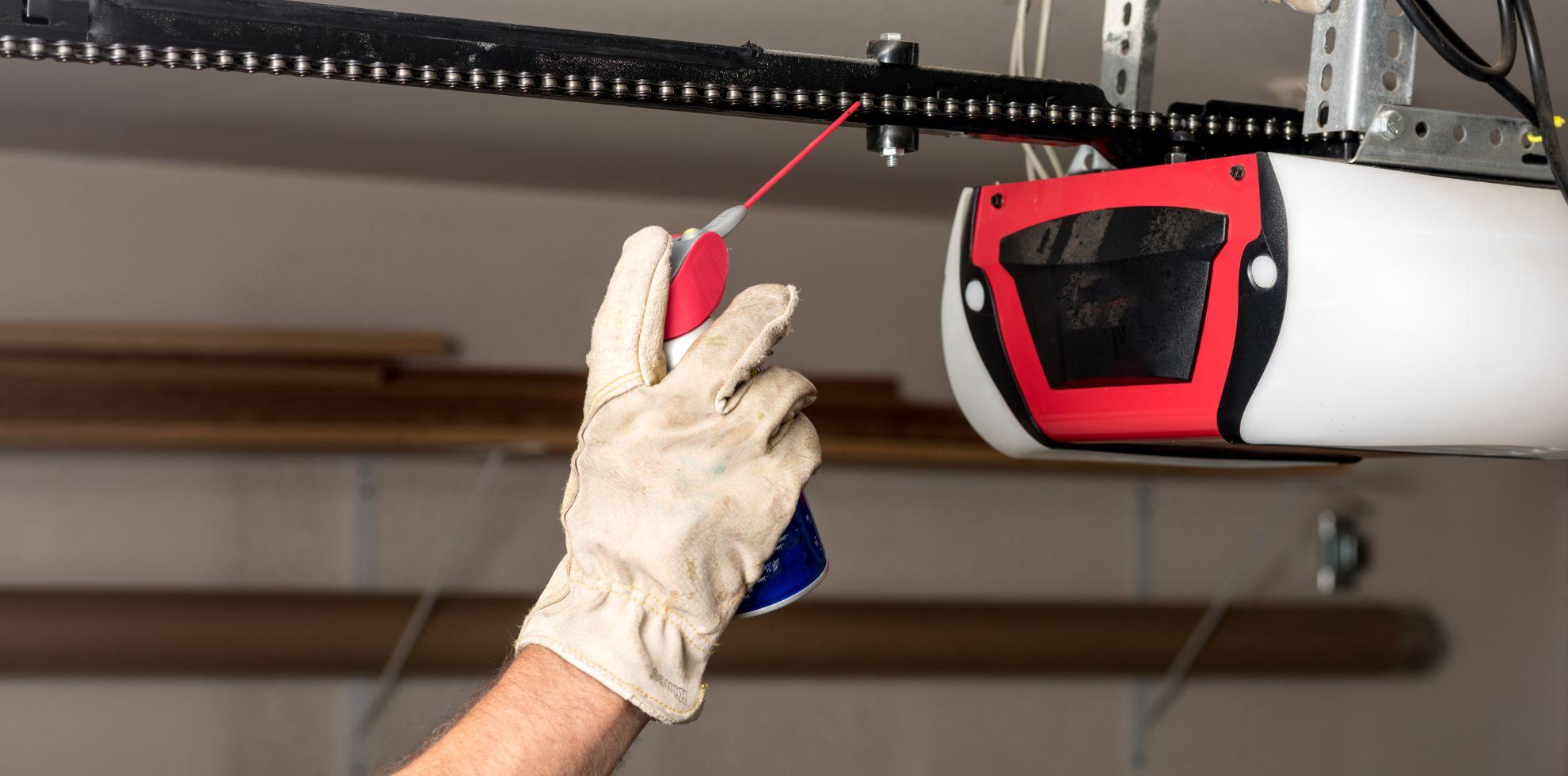
A smoothly functioning garage door is crucial for the security and convenience of your home. Regular maintenance, including proper lubrication, is essential to ensure your garage door operates silently and efficiently. In this comprehensive guide, we’ll delve into the step-by-step process of lubricating your garage door, the best lubricants to use, and other valuable tips to extend the life of your garage door.
Why Lubricate Your Garage Door?
Before we jump into the specifics, let’s understand why lubricating your garage door is so important. Over time, the various components of your garage door system, such as rollers, springs, and tracks, can accumulate dirt and grime. This buildup can lead to increased friction, causing the door to operate less smoothly and producing annoying noises.
Proper lubrication not only reduces friction but also helps prevent wear and tear on the moving parts of your garage door. Regular lubrication is a cost-effective way to extend the life of your garage door and avoid potential costly repairs down the road.
Choosing the Right Lubricant
The first step in the garage door lubrication process is selecting the right lubricant. Not all lubricants are created equal, and choosing the wrong one could potentially damage your garage door components. Two popular options are silicone-based and lithium-based lubricants.
- Silicone Lubricants: Silicone-based lubricants are known for their versatility and ability to withstand extreme temperatures. They are an excellent choice for garage doors as they provide long-lasting lubrication and don’t attract dust and debris.
- Lithium Lubricants: Lithium-based lubricants are known for their durability and resistance to moisture. They are a good option for garage doors in humid climates as they provide effective lubrication and help prevent rust.
When choosing a lubricant, opt for one specifically designed for garage doors. These high-performance lubricants are formulated to withstand the unique challenges that garage door systems face, such as temperature fluctuations and heavy use.
Step-by-Step Garage Door Lubrication
Now that you’ve selected the right lubricant, let’s go through the step-by-step process of lubricating your garage door:
- Inspect the Door: Before applying lubricant, visually inspect your garage door for any signs of wear or damage. If you notice any issues, address them before proceeding with the lubrication.
- Clean the Components: Use a mild detergent or a garage door cleaner to remove dirt and grime from the various components of your garage door, including the tracks, rollers, and springs. A clean surface ensures that the lubricant can penetrate effectively.
- Secure the Door: To ensure safety during the lubrication process, disconnect the automatic opener and lock the door in the down position.
- Lubricate the Rollers: Apply the selected lubricant to the rollers, ensuring that each one is thoroughly coated. Rollers are a critical component, and proper lubrication here can significantly reduce friction and noise.
- Lubricate the Hinges: Apply lubricant to the hinges, focusing on the pivot points. This helps the door panels move smoothly without generating unnecessary noise.
- Lubricate the Springs: Carefully apply lubricant to the garage door springs. Be cautious, as these springs are under tension and can be dangerous if mishandled. If you’re uncomfortable lubricating the springs yourself, consider hiring a professional.
- Lubricate the Tracks: Apply lubricant to the inside of the tracks where the rollers move. This reduces friction and ensures the door moves up and down effortlessly.
- Weather Seals: If your garage door has weather seals, apply a silicone-based lubricant to keep them flexible and effective in sealing out the elements.
- Check and Test: After lubricating all the components, manually open and close the door a few times to spread the lubricant evenly. Listen for any unusual noises and address them promptly.
DIY Garage Door Lubrication Tips
For those who enjoy tackling household projects on their own, here are some additional do-it-yourself garage door lubrication tips:
- Regular Schedule: Establish a routine for garage door lubrication. Depending on usage and environmental factors, lubricating your garage door every six months is a good starting point.
- Use the Right Amount: Applying too much lubricant can be counterproductive, attracting more dirt and debris. A thin, even coat is usually sufficient for optimal performance.
- Choose a Dry Day: Select a dry day for lubrication to ensure that the lubricant adheres properly to the components. Moisture can dilute the lubricant and reduce its effectiveness.
- Wipe Excess Lubricant: After lubricating, wipe away any excess lubricant to prevent it from dripping onto your garage floor. This helps maintain a clean and safe environment.
Silicone vs. Lithium Garage Door Lubricant: Which is Better?
The choice between silicone and lithium lubricants often comes down to personal preference and the specific conditions in which your garage door operates. Here’s a quick comparison to help you decide:
Silicone Lubricant
- Pros: Resistant to extreme temperatures, doesn’t attract dust, provides long-lasting lubrication.
- Cons: Can be more expensive than lithium lubricants.
Lithium Lubricant
- Pros: Durable, resistant to moisture, widely available, cost-effective.
- Cons: May attract dust and debris, may require more frequent applications.
Ultimately, both types of lubricants can effectively lubricate your garage door, so choose the one that aligns with your priorities and the climate in which you live.
Garage Door Lubrication Schedule
Regular maintenance is key to the longevity of your garage door. Create a lubrication schedule based on factors such as how frequently you use the door and the climate in your area. Here’s a general guideline:
- Every Six Months: Lubricate all moving parts, including rollers, hinges, springs, and tracks.
- Monthly Inspection: Check for signs of wear, damage, or misalignment. Address any issues promptly to prevent further damage.
Prolonging Garage Door Hardware Through Lubrication
Proper lubrication not only extends the life of your garage door but also contributes to the longevity of the hardware. By reducing friction and minimizing wear and tear on components such as rollers, hinges, and springs, you can avoid premature failure and the need for costly repairs.
Reduce Garage Door Friction for a Quieter Operation
One of the primary benefits of regular lubrication is the reduction of friction, leading to a quieter garage door operation. Noisy garage doors can be a nuisance, especially if your garage is attached to your home. By following the steps outlined in this guide, you can enjoy a smoother, quieter garage door experience.
Final Thoughts
In the realm of home maintenance, your garage door stands as both a functional necessity and a crucial aesthetic element. Neglecting its care can lead to inconvenient breakdowns and disrupt the tranquility of your home. Through this guide, we’ve explored the art of lubricating your garage door the right way. Regular, proper lubrication ensures seamless operation, reducing friction, preventing wear, and contributing to a quieter, more reliable door.
Choosing between silicone and lithium lubricants comes down to understanding your environment and preferences. Tailor your choice to the unique conditions your garage door faces, and you’ll find a lubricant that perfectly complements your needs. Embrace the insights provided here, and you’re not just lubricating a mechanical system; you’re ensuring that the gateway to your home opens and closes with the grace and reliability it was designed for. So, grab the right lubricant, embrace the routine, and let the smooth, quiet hum of a well-maintained garage door become the soundtrack to your home’s everyday rhythm.










